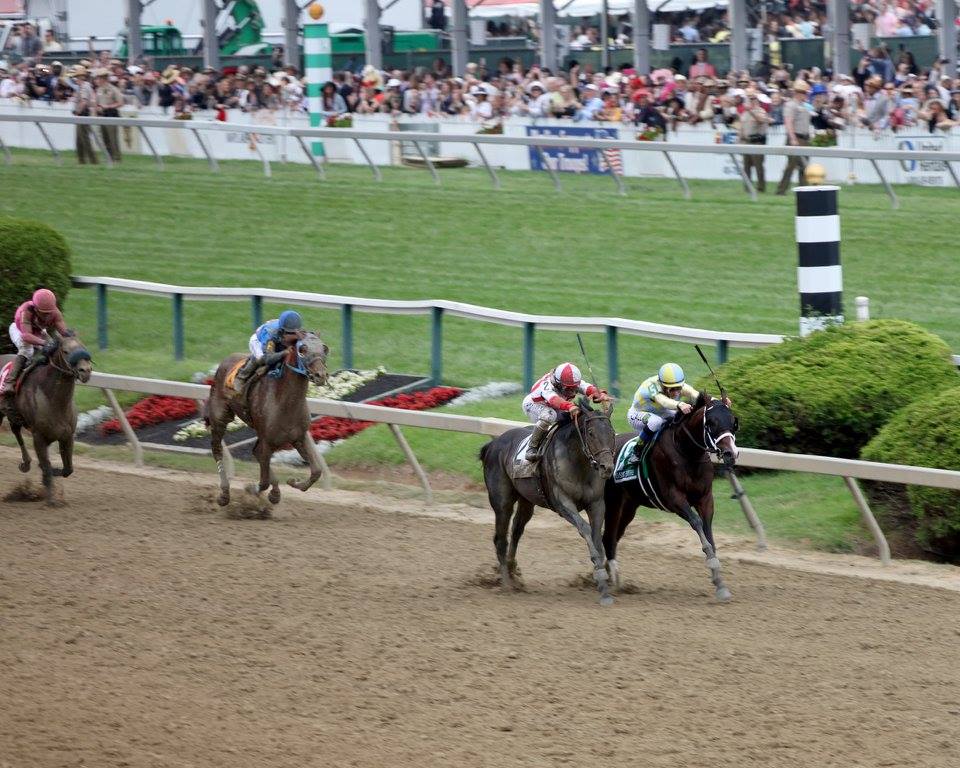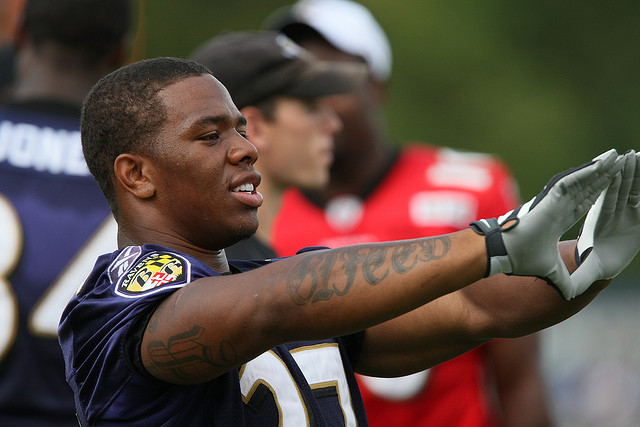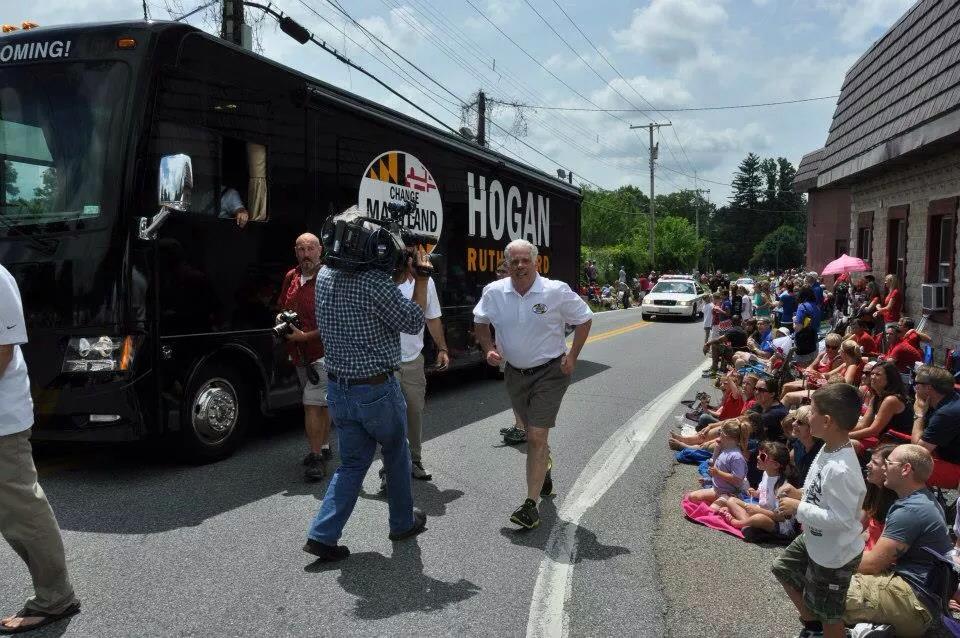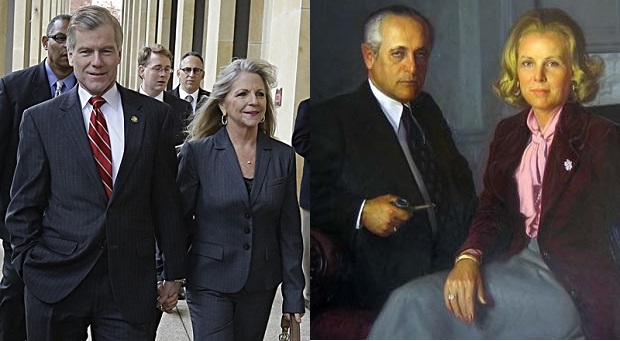By Michael Collins
For MarylandReporter.com
Last weekend should have been the last Preakness at Pimlico, but it probably won’t be.
Pimlico needs $300-$500 million overhaul to remain viable as the home of the Preakness, and its owners, the Stronach Group of Ontario, Canada, don’t want to pay for it. They could be betting that the tradition of the Preakness at Pimlico along with Baltimore’s inferiority complex will guilt-trip our state’s politicians into ponying up a half-billion dollars needed to make Pimlico a winner—socializing risk while privatizing reward.
Or they could be hoping the state wants to keep the Preakness so badly that it will put some of its taxpayer dollars into where they put their own investment, the track at Laurel Park.
Preakness history
Marylanders love the history of the Preakness. As WYPR’s Ric Cottom noted in last weeks delightful edition of “Your Maryland,” the Preakness began when Gov. Oden Bowie wanted to host a high stakes horse race in Maryland, but was in need of a track. In December 1869, the Maryland Jockey Club bought a property with a racing circle on it from an Englishman who grew up near Ben Pimlico’s tavern in London.
In October 1870, Governor Bowie’s Dinner Party Stakes race was run at Pimlico and the winner was a colt named Preakness. The first Preakness Stakes was run in 1873, two years before the Kentucky Derby.
The Preakness was not held from 1891-93. Then it was run in Coney Island, N.Y., until 1908, but has been at Pimlico ever since.
Nostalgia
Pimlico is a run-down facility, and horse racing is long past its heyday. At present, Pimlico only races horses 12 days per year. In addition, Pimlico is hard to get to, as Baltimore has grown up around it. Northern Parkway, Pimlico Road, and W. Belvedere Ave. border its 140 acres, with aging homes packed in on two sides.
By contrast, Laurel Park is easier to access. It is equidistant to Baltimore and Washington, sits between I-95 and 295, has a MARC train stop, and is near BWI airport.
Laurel Park sits on 260 acres setback from Brockbridge Road and the MARC line, with some surrounding green space. And Laurel has been approved for 162 days of racing this year.
Folks may be nostalgic for the tradition of horseracing at Pimlico, but the facility is past its service life and is no longer economically viable. Nostalgia is not enough to justify putting taxpayer money into the old nag.
Saying so long to Pimlico may seem like bidding farewell to Memorial Stadium. But even critics of Memorial Stadium’s demise will admit that Orioles Park at Camden Yards is a gem, and the Ravens’ roost at M&T Bank Stadium is first class.
Economic impact
Mayor Catherine Pugh is naturally reluctant to see the Preakness leave Baltimore. It’s about bragging rights as much as anything. Plus, Gov. Larry Hogan, who has a good relationship with Pugh, wants to to keep the Preakness in Baltimore too. Both tout the economic impact of the race.
According to a summary of the economic impact prepared by the Maryland Department of Commerce Office of Research, the 2015 Preakness had an economic impact of $33 million in gross spending.
By contrast, in 2013, Anirban Basu of the Sage Policy Group estimated the economic impact of the Baltimore Ravens at between $150-$200 million, or about $20 million per game, for a facility that cost about the same as the proposed Pimlico upgrade.
The notion that the government, either directly or through the Maryland Stadium Authority should help defray the cost of Pimlico’s upgrade is ludicrous. An “investment” of up to $300-$500 million will never recoup the return on investment. One would think that 140 acres of prime real estate could be put to more productive use.
Politics
The 2018 gubernatorial election offers an interesting twist to the Pimlico saga. The Stronach Group can use the Preakness as leverage to get funding from the governor and legislature for Pimlico or Laurel. And you can bet your bottom dollar that Mayor Pugh and the city’s legislative delegation will pile on, playing the “woe-is-us” game on the one hand, and the “save the tradition of the Preakness” on the other hand. But, why?
Baltimore is still reeling from the Freddy Gray riots. It has a soaring murder rate, an astronomically high unemployment rate for black youth and struggling schools. With all the pressing needs facing Baltimore, what message does a half-billion dollar “investment” in Pimlico send to the underserved just so the well heeled can have their annual costume party?
Empirical evidence says the Preakness should move to Laurel Park and that redeveloping Pimlico would be of greater benefit to Baltimore. However, expect our politicians to work out an election year deal to “save” the Preakness at Pimlico because doubling down for Baltimore—even on bad bets—is what they do with our money.
Michael Collins can be reached at [email protected]







Baltimore has lost 72,078 tax payers and uncounted businesses and loses $4.05 BILLION dollars in ANNUAL AGI because of the high crime and taxes. They bring in the illegals to fill up their apartment buildings with government hand out checks. Not one dime of tax payers money should be spent on Pimlico – if the owners are unwilling to fund it themselves then SHUT IT DOWN. period.
“…socializing risk while privatizing reward.”
That is an excellent line. Kudos, Mr. Collins!
Also, the neighborhood surrounding Pimlico is a high crime area and a security guard was assaulted the day of the race…
$300-500 MILLION is way to much to pay for “bragging rights?”, nostalgia, 12 races per year, and an alcohol fueled fashion and infield freak show…
Speaking of races… They are not covered by the TV and radio station newscasts… So, horse racing is really important to Maryland…/sarcasm
And have we paid off the bonds related to Oriole Park and M&T Stadium ? I opposed the public funding of them too… The MLB and NFL are quite wealthy and don’t need our help…
The fact that the owners don’t want to “pony up” ( excuse the pun ) the money should tell you something…
If one is extremely short sighted and simply sees Pimlico as a place an annual costume party is held, then there is no discussion here. But if you open your eyes and look beyond your city limits to the industry (which is not “all but dead” @disqus_DkAC6wKI0p:disqus ) statewide and the impact of Pimlico, there is so much more to the picture than abrasive accusations of well heeled vs. a struggling and oppressed city. Ask how many people work in the industry, how many (non-well-heeled) families depend on racing for a living, how many connections are included in racing, and so much more. Please do not dismiss out of hand the scores of people who work in the industry 365 days a year, seven days a week, including all holidays. And to say Baltimore is still reeling from riots in the 60s is to completely discredit all of the efforts of those communities who have fought for revitalization and made a difference in our beautiful city. There is always work to be done, but don’t destroy something wonderful as a means to throw money at problems which would better be addressed by hands on and heart to heart help and assistance.
Baltimore is still reeling from the riots in the 1960’s and the Freddie Gray riots just made it worse. I can understand the nostalgia, but there comes a time when common sense must prevail. The Preakness can still be “The Preakness” but just at another facility. The drunks of the infield aren’t there for the racing….they are there for the booze and entertainment. The horse racing industry in MD is all but dead and that is hard to accept for some, but compromise is a must if the Preakness is to retain it’s status as a crown jewel of horse racing.